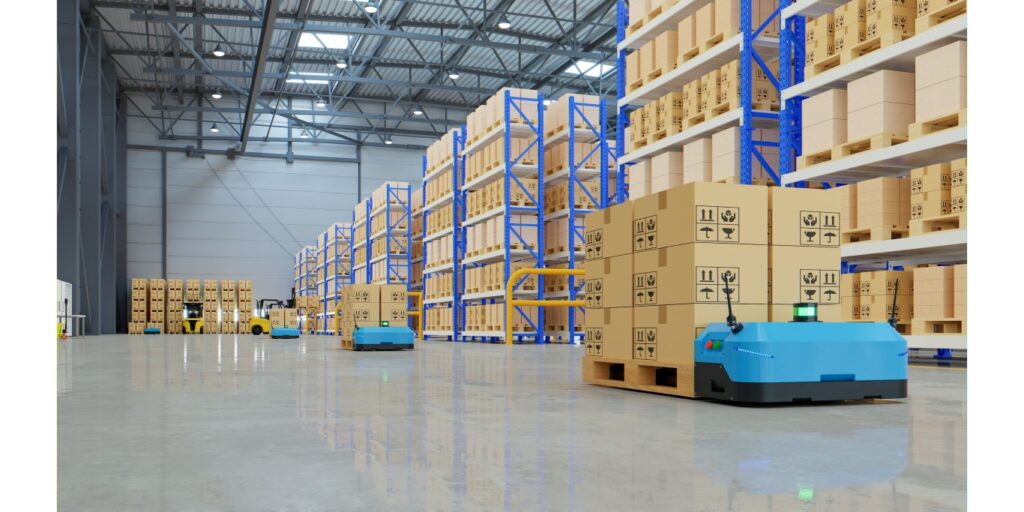Moving Robots: Facilitating Transportation of Heavy Racks, Pallets, and Containers
Warehouses and industrial facilities face difficulties when it comes to transporting heavy racks, pallets, and containers. Luckily, the introduction of moving robots has completely changed the game. Each agv robot for warehouse has innovative features and strong structures that are revolutionizing the movement of hefty objects in warehouse settings.
This article will delve into how these advanced robots are reshaping the transportation process of heavy racks, pallets, and containers within warehouses, resulting in smoother operations and enhanced productivity levels.
An Introduction to Moving Robots

Enter the world of moving robots, also referred to as mobile robots or autonomous mobile platforms. These specialized machines are designed with the purpose of effortlessly handling heavy loads and independently navigating vast warehouse spaces.
They achieve this feat by employing state-of-the-art sensors, navigation systems, and intricate algorithms – a technological trifecta that culminates in flawless transportation capabilities for hefty objects. The employment of these remarkable robots eradicates the need for manual labor while simultaneously mitigating any potential risks tied to arduous lifting procedures.
Streamlined Conveyance of Heavy Racks
Commendably skilled when it comes to maneuvering within warehouses, moving robots truly shine when entrusted with the task of transporting hefty racks. Beyond mere conveyance, these intelligent machines can be equipped with additional features like forklift attachments or clamps that securely hoist and transport racks on demand. With an inherent ability to autonomously navigate through complex warehouse layouts, their presence optimizes rack movement logistics by minimizing reliance on human effort and expediting relocation processes tremendously. Meticulous attention is given to precision and stability in order to guarantee the safe transportation of racks without endangering their integrity through accidental damage.
Efficient Pallet Handling
Warehouse operations heavily rely on pallets, which are often burdened with heavy loads. With the help of specialized attachments like forks or conveyor systems, moving robots can proficiently transport pallets between different locations. These robots navigate autonomously, skillfully avoiding obstacles in their path as they transport pallets to desired destinations. The introduction of moving robots for pallet handling diminishes the need for manual labor, reduces handling errors, and optimizes the movement of pallets within the warehouse.
Enhanced Container Transport and Stacking
The logistics of a warehouse greatly revolve around containers – whether they’re large shipping containers or smaller bins. By equipping moving robots with unique attachments and gripping mechanisms, these machines become capable of independently transporting containers, stacking them efficiently, and retrieving them when required.
These robots possess exceptional navigation abilities that enable them to maneuver through narrow spaces and access hard-to-reach areas while executing precise container stacking operations. Through automating container transportation tasks, moving robots streamline overall operations within warehouses by maximizing space utilization while augmenting efficiency levels throughout.
Adaptability and Scalability
The beauty of moving robots lies in their adaptability and scalability, allowing them to handle diverse load sizes, weights, and formats. These robots can be customized with adjustable attachments that ensure compatibility with different rack types, pallet sizes, and container dimensions. The ability to easily scale the fleet of moving robots according to changing operational needs empowers warehouses to efficiently manage increased volumes and meet evolving business demands.
Safety and Efficiency
When it comes to transporting heavy objects, safety and efficiency take center stage for moving robots. Equipped with advanced sensor systems, these smart automatons can swiftly detect obstacles, humans, or other equipment in their path. By prioritizing collision avoidance and worker safety within their operations through intelligent sensing mechanisms, moving robots provide a safe working environment. Moreover, leveraging their autonomy and consistent performance significantly enhances overall operational efficiency as they eliminate manual transportation efforts while reducing time consumption—a winning formula for improved productivity across the board.
Integration with Warehouse Management Systems
To unlock the full potential of these remarkable machines, seamless integration with WMS or WCS is imperative. Such integration allows flawless communication between the moving robots themselves alongside inventory databases and other warehouse automation systems present within the infrastructure. By doing so, WMS or WCS optimally assign tasks to each unit while simultaneously tracking
Conclusion
The transportation of heavy racks, pallets, and containers in warehouse environments is experiencing a groundbreaking transformation with the introduction of moving robots. These self-sufficient mobile platforms offer a powerful and effective resolution that improves operational efficiency, safeguards worker well-being, and boosts overall productivity within warehouses. By harnessing the flexible nature, expandability, and advanced functionalities of moving robots, warehousing facilities can streamline their operations, optimize space utilization, and effectively tackle the demanding logistics landscape encompassing the movement of heavy loads.